Enchanted, audio prologue
Read by Acapella Sharon22 in Text loud
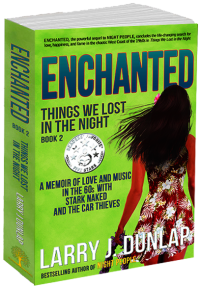
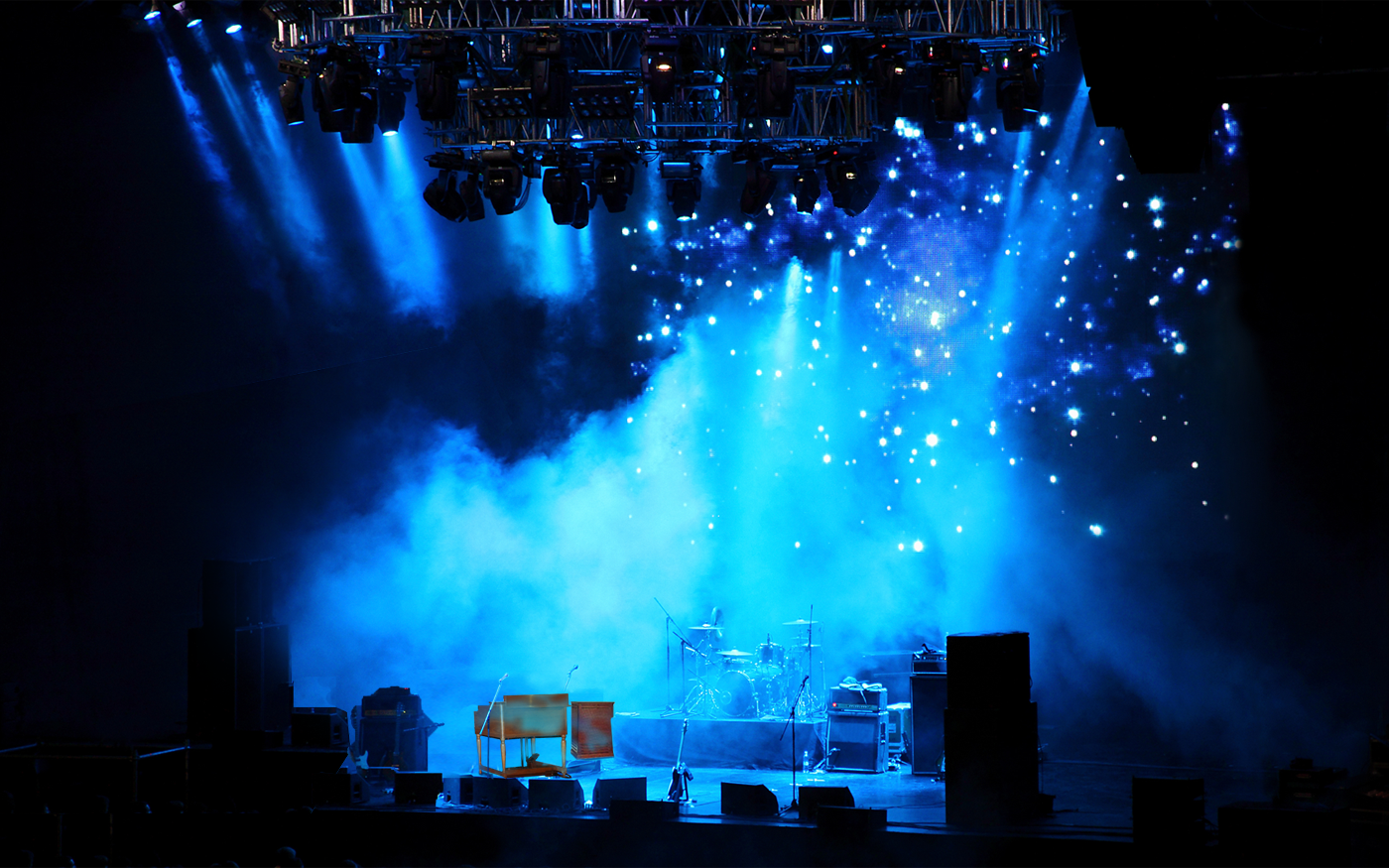

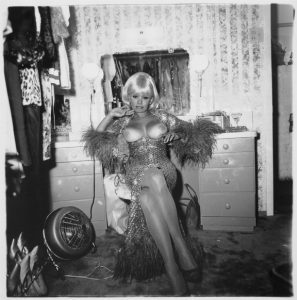
Diane Arbus’ photo of Carol Doda
The topless craze in North Beach that rocked San Francisco during the 60s began with the legendary Carol Doda. She was an amazing character and a true San Franciscan. She died Wednesday, November 11, 2015. She was 78 and I’m sorry to be just finding that out and writing about her now. I didn’t know her but by all accounts she was well-liked and in her later years had her own clothing store. She was a Californian icon and I hate to see them pass. We worked in a topless club, the Galaxie, just across the street from the Condor Club, for most of 1966 with our own covey of topless dancers, singers, and showgirls, who befriended us and helped acclimate us to working on Broadway in the City. We were still fresh from Indiana after slaving away in the dive bars across the Bay, and it took some getting used to. It was one of my favorite years….
This short video is from the Channel 7 ABC News in San Francisco.

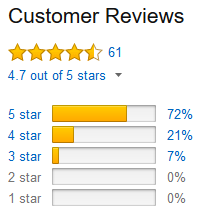 One of the best biographies written by a musician!
One of the best biographies written by a musician!
A Riveting, Mythic, Rock and Roll Memoir
Wonderful! Excellent Read!
Thoroughly Entertaining.
A Great Read
A Window Into a Fascinating Era
Rock and Roll, baby!
A Must Read
A Great Read About An Exciting Life
Music Has Found Me Again
SO Worth Reading!
My Life Seemed Extremely Boring After Finishing “Night People”
Lessons of Life, Love, and Sex in the 60s
Genuine, Exciting, Graphic and Memorable – life in the 60’s
Fantastic Coming of Age Memoir!
Compelling
Great Look At An Era
Meant to be savored
Engrossing
Rock and roll band life
Brilliantly crafted
Passion for music
Car Thieves take me away!

A look back at the festivals of the ’60s whose influence can still be felt in the music and festivals of today. Source: Summer of Love: The History of San Francisco Music in the ’60s and its Influence Today
A look back at the festivals of the ’60s whose influence can still be felt in the music and festivals of today.
The year was 1967 and the place was San Francisco. It was the Summer of Love; a season of creative expression, free society, cultural revolution and arguably the beginning of what we now enjoy as modern music festivals.
I hit the road for Outside Lands this week and I can’t help but reflect (or slightly obsess) over the rich musical history that once graced the Bay Area. It was a time like no other — it was pure, quick-moving, and psychedelic — the Summer of Love irreversibly changed our culture forever. I grew up in Northern California, an hour outside of San Francisco, with my dad’s vinyl collection on continual rotation. The likes of David Crosby, the Doors, and the Who were constant companions of mine and I was captivated by an early age. I was in. But, alas, two decades too late… so this year I wanted to make a point to research this beautiful history and experience “today’s” San Francisco music festival with this knowledge in my back pocket. To feel the energy of the past, to respect the history and the people who pushed an artistic and creative generation forward.
Aug 04, 2015
 “She’s Beautiful When She’s Angry” Mary Dore’s documentary of The Women’s Movement
“She’s Beautiful When She’s Angry” Mary Dore’s documentary of The Women’s MovementI’ve always contended that the Pill was one of the main contributors to many if not all of the upheavals of the 60s, not just the women’s movement that got started then. When Margaret Sanger, who felt that women should be allowed to pursue sex with the same sense of abandon as men, combined with Dr. Gregory Pincus, a biologist expert in mammalian birth, combined to create a birth control pill as easy to take as an aspirin, it changed the game entirely. Many women recognized the power of being able to change their reproductive cycle from random chance to a matter of choice, and all the ways they could exert it on the world around them, especially socially. In the 60s, before the scourge of HIV and the lack of incurable, and possible life-threatening sexually-transmitted disease, this change introduced what was considered in many places a scandalous return to the sexual freedoms of the Garden of Eden, pre-fall.
As young men from the Midwest, we began to notice this new attitude when we were hired to work for a year doing shows at a ritzy topless night club in San Francisco’s North Beach, original home of the West Coast beatniks. Women were the instigators now. The saying “men proposed, women depose” wasn’t always true. The girls could also propose and decide the outcome of sexual encounters. Females taking off their tops in San Francisco was no longer hidden in sleazy strip clubs populated by lonely men in raincoats, but featured in the heart of the City’s nightlife. Audiences were filled with ‘date night’ couples, men in suits and women arrayed in top couture come to view the Topless Insurgency.
Four miles south of us in Haight Ashbury, the Peace and Love movement flourished, however it seems obvious to me that ‘free love’ would have drowned itself in a sea of offspring if the ability of the girls and women there had been unable control pregnancy. Much of that movement was driven by the ethos of women, that love could conquer all, who wouldn’t have been able to take that leadership role if not able to postpone childbearing.
However, as the author of this article, points out, it wasn’t all romance either.
“March is Women’s History Month and Mary Dore’s documentary She’s Beautiful When She’s Angry helps us celebrate, remember, and cheer one of our most vilified sheroes of the last century, The Women’s Movement.Zooming in on the years 1966 to 1971, Dore excavated the archival images of the birth of the movement. She captures the spirit, soul and fire of these fiercely courageous, brilliant and badass feminists who were fighting for the very same issues we fight for today – our right to control our bodies, and our struggle for freedom and equality. We stand on the shoulders of these mighty warriors.
And who said feminists aren’t any fun? Dore documents the hilarity, excitement, outright boldness and scandalous moments of the movement.”
– See more at: http://www.gaystarnews.com/article/discover-bold-brilliant-badass-feminists-60s060315#sthash.mSRFc4l9.dpuf
 Hi, I’m Larry J. Dunlap, and I’m introducing my memoir BAND, memoir of A Naked Car Thief. I’ve been writing since the late seventies when I was in the business side of music. I did artist reviews and a cartoon strip for local music magazines then. Wrote my first story, a science fiction tale about built around a play-by-mail space empire game I was addicted to about then, too. I began professional technical writing after I’d gotten involved in technical training, eventually writing for Fortune 100 companies on contract. In recent years as the press of professional life lessened, I have returned to something I knew I’d have to do before embarking on any other authorial projects, a remembrance of my transition from a young Midwestern man/boy dreamer to a creator’s life in the warm California sunshine via a mid-sixties rock band. An excerpt from this memoir was published in an Inlandia Institute anthology last November.
Hi, I’m Larry J. Dunlap, and I’m introducing my memoir BAND, memoir of A Naked Car Thief. I’ve been writing since the late seventies when I was in the business side of music. I did artist reviews and a cartoon strip for local music magazines then. Wrote my first story, a science fiction tale about built around a play-by-mail space empire game I was addicted to about then, too. I began professional technical writing after I’d gotten involved in technical training, eventually writing for Fortune 100 companies on contract. In recent years as the press of professional life lessened, I have returned to something I knew I’d have to do before embarking on any other authorial projects, a remembrance of my transition from a young Midwestern man/boy dreamer to a creator’s life in the warm California sunshine via a mid-sixties rock band. An excerpt from this memoir was published in an Inlandia Institute anthology last November.
I’ve always known it was likely I’d be a writer since I have been such an inveterate and addicted reader. For many reasons, I never attempted to write for a wide audience until relatively recently. During the six plus years I was leader of the rock band that grew out of my homespun vocal group in Indianapolis, I formed incredible bonds with my band mates. When we gathered to reminisce, we’d always remind ourselves of the interesting adventures we’d survived. I was always prompted by the guys saying, “Man, you have got to write a book about this.” As the years went by I heard from several of them saying that it was hard to talk about what we’d accomplished because no one could relate to their memories. When I could finally devote myself to this project I wanted to rectify that impression. I realized that vignettes, told out of context, sound like either bragging or disconnection. Telling our story would put it all in context. However, with our fading and differing memories there was only one way to do that, as a personal memoir. The more I settled into the project the more I realized I’d come to the right conclusion. I needed to write about my story, how I felt, what it meant to me, and let the rest of it shine through as I remembered and retold it.
My memoir starts on New Year’s Eve of 1964, though  chapter one covers a dangerous and violent night relating to the near hit record our vocal group in Indianapolis almost accidentally had in our nearby big city, Chicago. As a husband of two wonderful little boys and my high school sweetheart wife I loved, I was struggling with finding my creative place in the world. The environment around us in the structured world we grew up in and the hard line taken by our parents finally blew up when the group and I tried to turn ourselves into a working band. Though the first incarnation failed, a miraculous event sealed my fate and I was off to California to join my old buddies in a desperate attempt to create a rock band within a week in the seething musical chaos of San Francisco’s east bay dive bars. At the cost of the wrenching destruction of my family, the journey began that would carry us into adventure after adventure, to the top of San Francisco’s night life, through Hollywood, famous personal managers and record producers, to the heights of Las Vegas’ rock scene and the top of the largest Vegas resorts. A side trip to the Hawaiian islands found us performing for American warriors on R&R during the height of the Vietnam war, where I met a Hawaiian girl who touched me as deeply as my first love. As our status as performing stars rose, though we struggled with recording success, I was certain I’d reached the pinnacle of happiness and success. But there were undercurrents beyond my control that would bring me to the edge of sanity and the end of the music. Somehow I’d have to save my band, hope to save my new family, and try not to lose myself.
chapter one covers a dangerous and violent night relating to the near hit record our vocal group in Indianapolis almost accidentally had in our nearby big city, Chicago. As a husband of two wonderful little boys and my high school sweetheart wife I loved, I was struggling with finding my creative place in the world. The environment around us in the structured world we grew up in and the hard line taken by our parents finally blew up when the group and I tried to turn ourselves into a working band. Though the first incarnation failed, a miraculous event sealed my fate and I was off to California to join my old buddies in a desperate attempt to create a rock band within a week in the seething musical chaos of San Francisco’s east bay dive bars. At the cost of the wrenching destruction of my family, the journey began that would carry us into adventure after adventure, to the top of San Francisco’s night life, through Hollywood, famous personal managers and record producers, to the heights of Las Vegas’ rock scene and the top of the largest Vegas resorts. A side trip to the Hawaiian islands found us performing for American warriors on R&R during the height of the Vietnam war, where I met a Hawaiian girl who touched me as deeply as my first love. As our status as performing stars rose, though we struggled with recording success, I was certain I’d reached the pinnacle of happiness and success. But there were undercurrents beyond my control that would bring me to the edge of sanity and the end of the music. Somehow I’d have to save my band, hope to save my new family, and try not to lose myself.
I’m currently working my way through the second edit. Memoir is a special form that I’ve come to really appreciate; I learned a lot from Wild, by Cheryl Strayed, and Candy Girl, by Diablo Cody, and read many, many others as I prepped for, and continue to write. I’ve adopted a narrative style including dialog to my memoir because that’s how I remember it even though it was so long ago. We moved through a time of great historical and cultural change the background behind the events of the story; there is no need to embellish the dramatic arc at all, it just is what it was. I hope other memoirists see their story as vividly as I see mine. I’m looking forward to finding more examples of this style to continue to inspire me.
Unfortunately, most memoir readers and many memoir authors see them as tearjerkers, while there’s certainly a low point in my story, so low that it feels more like black humor to me, I’m not looking for sympathy or redemption. Personally, I hate saccharine sweet stories. In my eyes I’m just trying to recount what I think of as a great adventure that I was lucky enough to be a part of, and survive — without judgment. To do this requires honing the skills and dramatic arts of authors of fiction. I hope from the Memoir’s Discussion Group on LinkedIn to be influenced by others who approach their life adventures in this way, and to be a source of influence to others in the style I’ve chosen.
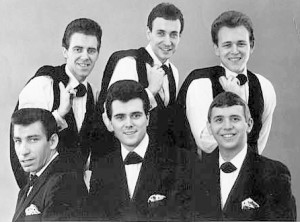 Recently, Dave sent me some photos that had come to light. This one show our band in early 1966, I’m going to guess about February or so. Dave Rapken, was the club owner of one of the hottest topless bars in North Beach, back when the naughty but nice atmosphere brought celebs of every stripe over to the original Barbary coast, when he hired us to play at his club for a year. Though he never said, I am certain that the name Stark Naked and the Car Thieves really appealed to him. It had been a joke name to us but there was no changing it now.
Recently, Dave sent me some photos that had come to light. This one show our band in early 1966, I’m going to guess about February or so. Dave Rapken, was the club owner of one of the hottest topless bars in North Beach, back when the naughty but nice atmosphere brought celebs of every stripe over to the original Barbary coast, when he hired us to play at his club for a year. Though he never said, I am certain that the name Stark Naked and the Car Thieves really appealed to him. It had been a joke name to us but there was no changing it now.
Most of us were vocalists, recently arrived from Indianapolis, and we’d formed a band with some available musicians and played a couple of bay area, (mostly dive bar) clubs for a few months. Dave Rapken insisted on suits, as you can see in the publicity picture he arranged for. He also hired a pretty tough guy who had many years experience in Las Vegas. Eddie taught us stagecraft, virtually at gunpoint. Usually we did what he asked since he made such a point of it but on occasion, we slipped.
Sharing a dressing room with six topless dancers over a year was an education there was no way to prepare for, let alone if you were a recent emigrant from the Midwest. It was all part of growing up as A Naked Car Thief.
Across the top: Mac, Dave, Larry; across the bottom, Leonard, Les, Jack. I still can’t believe we were ever that young.
 I just can’t help it. I am putting up another topless dancer picture. I have spent the last couple of days doing research for a final chapter on our experiences in the incredible atmosphere of North Beach in San Francisco in 1966.
I just can’t help it. I am putting up another topless dancer picture. I have spent the last couple of days doing research for a final chapter on our experiences in the incredible atmosphere of North Beach in San Francisco in 1966.
Originally the old Barbary Coast to the various and often scurrilous sea-farers of the 1800’s it became a major Italian neighborhood in the City, featuring outstanding Italian food and imposing Catholic churches. While known as the “Paris of the West”, in the forties and fifties it spawned the beat generation centered around the City Lights bookstore in North Beach.
As the Beatniks faded away two cultural revolutions began to rise in the cauldron that is San Francisco. One of them was, of course, the rise of the Hippies in the Haight brought on in part by the student population of nearby San Francisco State College. In roughly 1963-4, the mainly Russian neighborhood began to change to the “Drop out, drop in” culture that would reign for a few short years. It was the hotbed for musical expression of the philosophy of the young or as it’s motto states: “Sex, Drugs, & Rock ‘n Roll”.
Meanwhile, over in North Beach in mid-1964, Carol Doda galvanized the world coming down in a bikini bottom on a piano at the Condor Club. This, of course, was the cultural stream we entered in late 1965 and it was without question a terrific time to be young and in music. Where the Hippie culture was re-defining music, we were reveling in the music of the era we loved. And we were surrounded by some of the best performers and musicians of our time.
But I was reminded in my Internet travels of this stunning lady, another iconic topless dancer of the era, Yvonne D’Angers, who performed at the Off Broadway. She was an Iranian-born blond bombshell who came to be known in the press as “The Persian Lamb”. She was a star witness in the 1965 trial over legality of topless waitresses but was much more famous for chaining herself to the Golden Gate bridge to protest her threatened deportation.
At least a part of the significance to North Beach to the City is trumpeted in a brazen newspaper ad: “Two of San Francisco’s three most famous landmarks … belong to Yvonne D’Angers, now appearing topless in North Beach at Off Broadway.” They fail to mention what that third one was.
January 17, 2011 by A Golden Gate State of Mind
Rather than start this series with a politician, business or military leader, important and influential in the city’s development though many have been, I thought I would focus on someone who epitomises the colourful, free spirited and boundary stretching personality of the city.
Carol Ann Doda was born of soon to be divorced parents on 29 August 1937 in Solano County, California, growing up in Napa. She dropped out of school and become a cocktail waitress and lounge entertainer at aged 14.
Described by the Internet Movie Database as a “lovely, busty and curvaceous blonde bombshell” she achieved fame, or notoriety depending upon your point of view, on 19 June 1964 at the Condor Club at the corner of Broadway and Columbus in North Beach, by dancing in a topless swimsuit, the first recognised entertainer of the era to do so, and spawning similar exhibitionism across the nation’s clubs. Such was her popularity that delegates from the 1964 Republican National Convention flocked to see her and she was given a film role as Sally Silicone in Head, created by Jack Nicholson and Bob Rafelson, and featuring The Monkees. She appeared in another six films.

Wikipedia describes her act, which she performed twelve times nightly, thus: (it) “began with a grand piano lowered from the ceiling by hydraulic motors; Doda would be atop the piano dancing. She descended from a hole in the ceiling. She go-go danced the Swim to a rock and roll combo headed by Bobby Freeman as her piano settled on the stage. From the waist up Doda emulated aquatic movements like the Australian crawl. She also did the Twist, the Frug and the Watusi”.
She later enhanced her bust size from 34B to 44DD through a total of 44 silicone injections, earning her breasts the nicknames of “the new Twin Peaks of San Francisco”. She had them insured for $1.5 million with Lloyd’s of London.
Doda created a further seismic impact in the entertainment industry on 3 September 1969 by dancing completely naked at the Condor, though she was obliged to put the bottom part of her costume back on again in 1972 after a rule was passed prohibiting nude dancing in establishments that served alcohol.
After appearing for more than a decade on KGSC-TV she returned to dancing at the Condor three times a night in 1982, “in a gold gown, traditional elbow-length gloves, and a diaphanous-wraparound. Her clothing was removed until she wore only a G-string and the wraparound. In the final portion she was attired in only the wraparound. Her small body looked slimmer without clothes which was emphasised by the dwarfing effect of her breasts”.
Retiring from stripping later in the decade she formed her own rock band, the Lucky Stiffs. She now runs the highly respectable “Carol Doda’s Champagne and Lace Lingerie Boutique” in Cow Hollow. Well into the new millenium, however, she was performing – with her clothes on – at a variety of North Beach clubs, including Amante’s and Enrico’s Supper Club, singing club standards like “All of Me”.
Despite the notoriety she earned by being the first dancer to break the topless / bottomless taboos in the U.S., her act was rarely regarded as sleazy. As she herself said: “I always just wanted to give people a good time, have fun. Nothing really dirty – just fun”.
And finally she has been truly immortalised in having a hamburger named after her at Bill’s Place on Clement at 24th in the Outer Richmond!